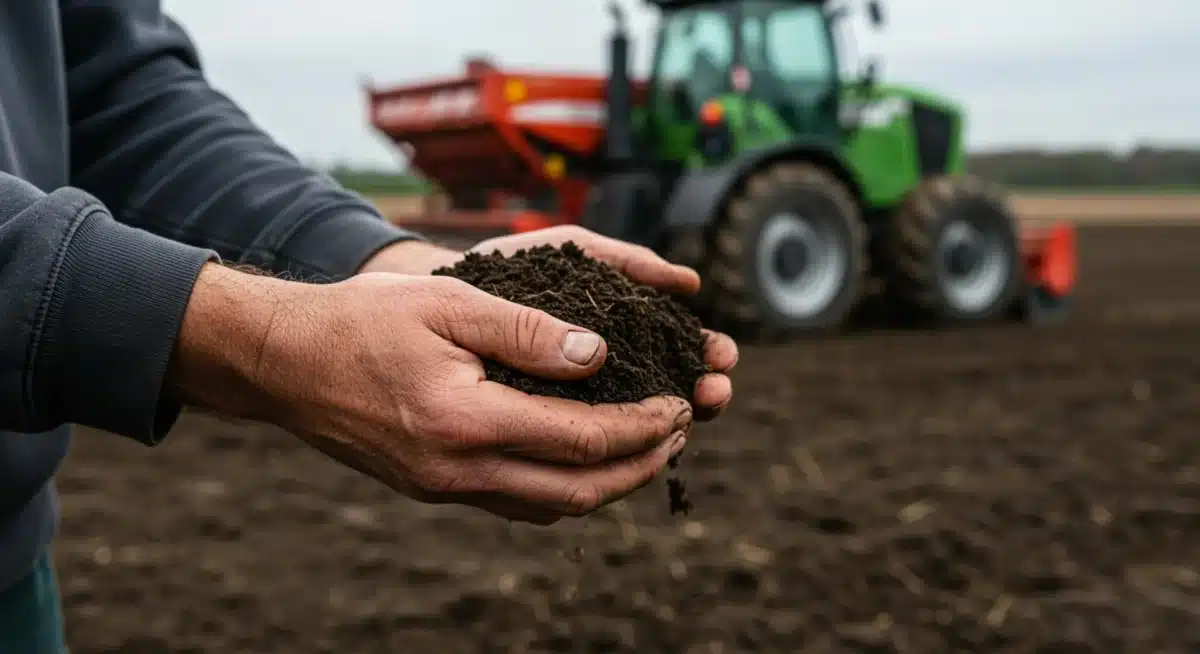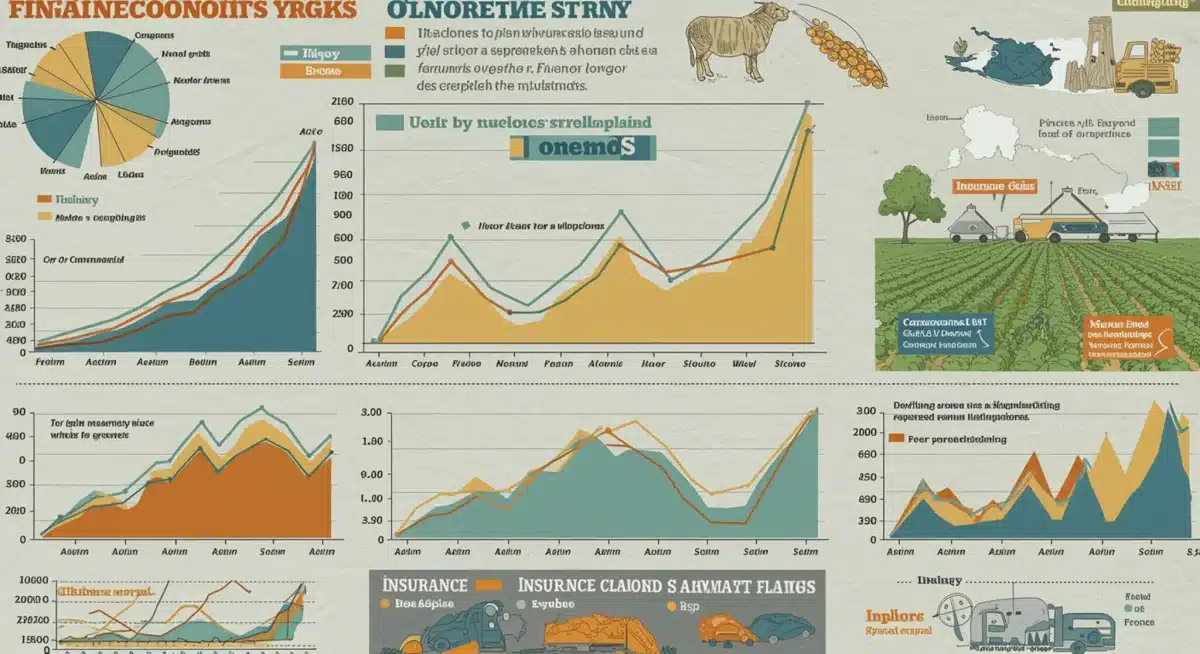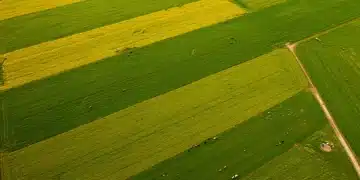Climate Change’s Economic Impact on US Agriculture

The economic impact of climate change on the US agricultural sector is profound, leading to altered crop yields, increased operational costs, and significant shifts in regional farming viability, demanding urgent adaptation and policy changes.
As the world grapples with shifting environmental patterns, the question of Understanding the Economic Impact of Climate Change on the US Agricultural Sector becomes increasingly critical. This isn’t merely an abstract scientific discussion; it directly touches the livelihoods of millions, the stability of our food supply, and the broader economic health of the United States. How are rising temperatures, altered precipitation, and more frequent extreme weather events reshaping the very foundation of American farming, and what financial ripple effects can we expect?
The Shifting Climate Landscape for US Farmers
The United States agricultural sector, a cornerstone of the nation’s economy and global food supply, finds itself at the forefront of climate change’s direct impacts. Farmers across the country are observing unprecedented shifts in weather patterns, which directly influence crop cycles, livestock health, and overall productivity. These changes are not uniform; they manifest differently across diverse agricultural regions, from the fertile plains of the Midwest to the arid lands of the Southwest and the coastal farmlands.
One of the most noticeable changes is the alteration of growing seasons. Warmer springs can lead to earlier planting, but also expose young crops to late frosts. Conversely, prolonged summer heatwaves can stress plants and livestock, reducing yields and increasing mortality rates. The frequency and intensity of extreme weather events, such as droughts, floods, and severe storms, are also escalating, presenting immediate and devastating challenges to agricultural operations.
Increased Frequency of Extreme Weather Events
The agricultural landscape is increasingly defined by its vulnerability to extreme weather. What were once considered rare occurrences are now becoming more common, requiring farmers to constantly adapt and innovate.
- Droughts: Prolonged periods of insufficient rainfall lead to water scarcity, reduced crop yields, and increased irrigation costs, particularly in the Western US.
- Floods: Excessive rainfall and swollen rivers can inundate fields, destroy crops, erode topsoil, and damage infrastructure, affecting regions like the Midwest and Southeast.
- Heatwaves: Intense and prolonged heat stresses both crops and livestock, leading to lower yields, decreased animal productivity, and increased risk of heat-related illnesses or fatalities.
- Severe Storms: Hail, strong winds, and tornadoes can cause widespread physical damage to crops, farm buildings, and machinery in a matter of minutes.
These events not only cause immediate physical damage but also have cascading economic effects, from increased insurance premiums to higher input costs and diminished market stability. The unpredictability of these events makes long-term planning incredibly difficult for farmers, forcing them into a reactive rather than proactive stance against environmental threats.
Economic Ramifications on Crop Production and Yields
The direct link between climate change and crop production is undeniable, manifesting in altered yields, quality degradation, and shifts in cultivation viability. As temperatures rise and precipitation patterns become more erratic, staple crops face significant challenges, impacting both local food markets and global supply chains. The economic health of farming communities is intrinsically tied to these fluctuating yields.
For instance, corn and soybean, critical crops in the US, are highly sensitive to temperature and water availability. Prolonged droughts can drastically reduce yields, while excessive rainfall can lead to crop loss and delayed harvesting. These issues translate directly into financial losses for farmers, affecting their ability to repay loans, invest in future seasons, and maintain their livelihoods. The quality of crops can also suffer, leading to lower market prices even if yields are maintained.
Impact on Major US Crops
Different crops experience varying degrees of vulnerability to climate change, leading to regional disparities in agricultural impact. Understanding these specific vulnerabilities is key to developing targeted resilience strategies.
- Corn: Highly susceptible to heat stress during pollination, leading to reduced kernel set and lower yields.
- Soybeans: While somewhat more heat-tolerant, they still require consistent moisture, making them vulnerable to drought conditions.
- Wheat: Spring wheat is sensitive to high temperatures during grain filling, while winter wheat can be affected by erratic winter thaws and subsequent freezes.
- Specialty Crops: Fruits, vegetables, and nuts, often grown in specific microclimates, are particularly sensitive to temperature shifts, changes in chilling hours, and pest infestations.
The economic impact extends beyond the farm gate. Reduced crop yields can lead to higher food prices for consumers, increased reliance on imports, and potential food security concerns. The ripple effect can be felt throughout the entire food value chain, from processors and distributors to retailers, ultimately influencing the national economy.
Livestock and Dairy Sector Vulnerabilities
Beyond crops, the US livestock and dairy sectors are also feeling the significant economic squeeze from climate change. Animals, like plants, are sensitive to environmental conditions, and rising temperatures, altered feed availability, and increased disease vectors pose substantial challenges to their health, productivity, and profitability. The welfare of these animals is directly linked to the economic viability of countless farms across the nation.
Heat stress is a primary concern for livestock. High temperatures can reduce feed intake, decrease milk production in dairy cows, lower fertility rates, and slow weight gain in beef cattle and poultry. In extreme cases, heat stress can lead to increased mortality. This directly affects farmers’ bottom lines through reduced output and higher costs associated with cooling systems, veterinary care, and supplemental feed. The quality of meat and dairy products can also be compromised under stressful conditions.
Challenges to Livestock Health and Productivity
The complex interplay of environmental factors creates a challenging environment for maintaining healthy and productive livestock. Farmers must contend with multiple stressors simultaneously.
- Heat Stress: Leads to decreased appetite, reduced milk yield, lower reproductive rates, and increased susceptibility to disease.
- Water Scarcity: Droughts limit access to clean drinking water and reduce forage growth, forcing farmers to purchase and transport water and feed.
- Disease Vectors: Warmer temperatures can expand the geographical range and breeding seasons of pests like ticks and mosquitoes, leading to an increase in vector-borne diseases.
- Feed Availability and Quality: Climate impacts on crop yields directly affect the availability and price of feed, a major operational cost for livestock producers.
The economic implications for the livestock and dairy industries are far-reaching. Farmers may face higher operational costs, reduced market value for their products, and increased financial risk. The long-term sustainability of these sectors depends heavily on developing effective adaptation strategies to mitigate these climate-induced vulnerabilities.

Water Resources and Irrigation Costs
Water is the lifeblood of agriculture, and climate change is profoundly altering its availability and management in the US, with significant economic consequences. Changes in precipitation patterns, snowpack melt, and increased evaporation rates are stressing water resources, particularly in already arid and semi-arid regions. This scarcity directly impacts irrigation needs and costs, which are substantial expenses for many American farmers.
Many agricultural regions rely heavily on irrigation to sustain crop production, especially for high-value crops. As water sources become less reliable or more expensive, farmers face difficult choices. They may need to invest in more efficient irrigation systems, drill deeper wells, or even reduce their planted acreage. The cost of pumping water, driven by energy prices and the need to access deeper aquifers, is a growing financial burden that erodes profit margins. Furthermore, regulatory restrictions on water usage, often implemented during periods of drought, can severely limit agricultural output.
Rising Costs and Management Challenges
The management of water resources in a changing climate presents a multifaceted challenge, involving both technological and financial considerations for farmers.
- Increased Pumping Costs: Deeper wells and longer pumping times to access declining groundwater levels mean higher energy consumption and utility bills.
- Investment in Efficiency: Farmers are compelled to adopt more expensive, but water-saving, irrigation technologies like drip systems or precision irrigation, requiring significant upfront capital.
- Reduced Water Availability: Decreased snowpack and altered river flows lead to stricter water allocations, potentially limiting the amount of land that can be farmed.
- Water Rights Disputes: Growing scarcity can intensify conflicts over water rights among agricultural users, municipalities, and environmental interests, leading to legal and administrative costs.
The economic impact of water scarcity extends beyond individual farms, affecting regional economies that depend on agricultural output. The need for sustainable water management practices and robust water infrastructure has never been more pressing, as the long-term viability of agriculture in many areas hinges on securing reliable and affordable water supplies.
Adaptation Strategies and Economic Opportunities
While climate change poses significant threats, it also catalyzes innovation and the adoption of new adaptation strategies within the US agricultural sector. Farmers, researchers, and policymakers are actively exploring and implementing measures to build resilience, mitigate risks, and even identify new economic opportunities. These strategies often involve a blend of traditional knowledge, cutting-edge technology, and policy support.
One key area of adaptation is the development and adoption of climate-resilient crop varieties. These include drought-tolerant corn, heat-resistant wheat, and disease-resistant specialty crops that can better withstand adverse conditions. Farmers are also experimenting with diversified cropping systems, cover cropping, and no-till farming to improve soil health, water retention, and carbon sequestration. These practices not only enhance resilience but can also lead to long-term cost savings and environmental benefits.
Innovations in Climate-Resilient Agriculture
The agricultural industry is a hotbed of innovation, with new technologies and practices emerging to tackle climate challenges head-on. These advancements offer pathways to more sustainable and economically stable farming.
- Precision Agriculture: Using GPS, sensors, and data analytics to optimize fertilizer application, irrigation, and pest control, reducing waste and increasing efficiency.
- Agroforestry: Integrating trees and shrubs into agricultural landscapes to improve soil health, provide shade for livestock, and create additional revenue streams.
- Controlled Environment Agriculture: Techniques like vertical farming and greenhouses allow for precise control over growing conditions, reducing reliance on external climate factors and enabling year-round production.
- Improved Water Harvesting: Implementing systems to capture and store rainwater for irrigation, reducing dependence on groundwater and surface water sources.
These adaptation efforts not only help farmers cope with current climate variability but also position them for future challenges. Investing in these strategies can unlock new economic opportunities, such as carbon credit markets, and enhance the overall sustainability and competitiveness of the US agricultural sector on a global scale. The proactive embrace of change is proving to be a powerful economic tool.

Policy Responses and Future Economic Outlook
The scale of climate change’s economic impact on US agriculture necessitates robust policy responses at local, state, and federal levels. Government programs and initiatives play a crucial role in supporting farmers through periods of transition, incentivizing sustainable practices, and funding critical research. Without coordinated policy action, the agricultural sector’s ability to adapt and maintain its economic vitality would be severely hampered.
Current policy approaches often include financial assistance for farmers affected by extreme weather events, subsidies for adopting conservation practices, and funding for agricultural research into climate-resilient crops and livestock. The Farm Bill, a comprehensive piece of legislation renewed every few years, is a primary vehicle for these policies, influencing everything from crop insurance to conservation programs. Future policies will likely need to intensify their focus on climate adaptation and mitigation, recognizing the long-term nature of these challenges.
Government Support and Research Initiatives
Effective policy combines direct support with strategic investments in knowledge and innovation, ensuring that farmers have the tools and resources they need to thrive.
- Crop Insurance Programs: Federally subsidized insurance helps farmers recover financial losses due to weather-related disasters, providing a crucial safety net.
- Conservation Programs: Incentives for practices like cover cropping, riparian buffers, and nutrient management help improve soil health and water quality, enhancing resilience.
- Research and Development: Funding for universities and agricultural institutions to develop new crop varieties, pest management strategies, and sustainable farming techniques tailored to changing climates.
- Extension Services: Providing farmers with access to expert advice, training, and resources to implement new climate-smart agricultural practices.
The economic outlook for US agriculture under climate change is complex, balancing significant risks with potential opportunities for innovation and growth. Policies that foster adaptation, support research, and ensure financial stability will be instrumental in safeguarding the sector’s future. The success of these policies will determine not only the economic well-being of farming communities but also the nation’s food security and its position in the global agricultural market.
The Role of Technology and Data in Agricultural Resilience
In an era defined by rapid environmental change, technology and data analytics are becoming indispensable tools for enhancing agricultural resilience and ensuring economic stability in the US. Farmers are increasingly leveraging advanced solutions to monitor conditions, optimize resource use, and make informed decisions in the face of unpredictable weather patterns and climate shifts. This technological revolution is transforming how agriculture operates, moving towards more precise, efficient, and sustainable practices.
Precision agriculture, for instance, utilizes GPS, sensors, drones, and satellite imagery to collect vast amounts of data on soil conditions, crop health, and weather patterns. This data allows farmers to apply water, fertilizers, and pesticides more efficiently, reducing waste and environmental impact while maximizing yields. The economic benefit is tangible: lower input costs, higher productivity, and improved profitability. Furthermore, predictive analytics can help farmers anticipate potential climate risks, such as impending droughts or pest outbreaks, enabling proactive measures rather than reactive responses.
Leveraging Big Data for Smarter Farming
The integration of big data and artificial intelligence into farming practices is creating a new paradigm for agricultural management, offering unprecedented insights and operational advantages.
- Real-time Monitoring: Sensors provide continuous data on soil moisture, temperature, and nutrient levels, allowing for immediate adjustments to irrigation and fertilization.
- Predictive Modeling: Advanced algorithms analyze historical climate data and current forecasts to predict crop yields, disease outbreaks, and optimal planting/harvesting times.
- Automated Systems: Robotics and automated machinery, guided by data, can perform tasks like precision planting, weeding, and harvesting, reducing labor costs and increasing efficiency.
- Supply Chain Optimization: Data analytics can improve logistics, inventory management, and market timing, ensuring produce reaches consumers efficiently and at optimal prices.
The economic advantages of adopting these technologies are significant, including reduced operational costs, increased yields, and enhanced resilience against climate variability. However, access to technology, digital literacy, and the initial investment required remain challenges for some farmers. Therefore, policies that support technology adoption and provide training are crucial for ensuring equitable access to these transformative tools, thereby strengthening the overall economic resilience of the US agricultural sector.
| Key Impact Area | Brief Economic Description |
|---|---|
| Crop Yield Volatility | Unpredictable weather leads to fluctuating harvests, impacting farmer income and food prices. |
| Increased Operational Costs | Higher expenses for irrigation, pest control, and livestock cooling due to climate shifts. |
| Supply Chain Disruptions | Extreme weather events can damage infrastructure, causing delays and increased transportation costs. |
| Market Instability | Variability in production can lead to price swings for agricultural commodities, affecting farmers and consumers. |
Frequently Asked Questions About Climate Change and US Agriculture
Climate change impacts crop yields through altered growing seasons, increased frequency of extreme weather events like droughts and floods, and higher temperatures that stress plants. These factors can lead to reduced harvest volumes, lower crop quality, and increased susceptibility to pests and diseases, directly affecting farmer income and food supply stability across the US.
For livestock farmers, climate change brings challenges such as heat stress reducing animal productivity (milk, meat, reproduction), increased costs for cooling and water, and shifts in feed availability and quality due to crop impacts. These factors often result in higher operational expenses and diminished profitability for the livestock and dairy sectors.
Climate change alters precipitation patterns and snowpack, leading to water scarcity in many agricultural regions. This necessitates increased irrigation, driving up costs for pumping and infrastructure. Farmers face higher energy bills and potential restrictions on water usage, directly impacting their financial viability and the sustainability of water-intensive crops.
US farmers are adopting various strategies, including planting climate-resilient crop varieties, implementing precision agriculture technologies, improving soil health through cover cropping, and diversifying their operations. These measures aim to enhance resilience against extreme weather, optimize resource use, and maintain productivity in a changing climate, often with government support.
Government policies are crucial, providing financial aid through crop insurance, incentivizing conservation practices, and funding research into climate-smart agriculture. Programs within the Farm Bill help farmers adapt to new conditions, manage risks, and develop sustainable practices, thereby safeguarding the economic stability and food security of the US agricultural sector.
Conclusion
The economic impact of climate change on the US agricultural sector is a multifaceted and evolving challenge that demands continuous attention and proactive solutions. From volatile crop yields and stressed livestock to escalating water costs and market instability, the financial pressures on American farmers are undeniable. Yet, amidst these challenges, there is a clear pathway forward through innovative adaptation strategies, technological advancements, and robust policy support. By investing in climate-resilient practices, leveraging data-driven insights, and fostering collaborative efforts between farmers, researchers, and policymakers, the US agricultural sector can build greater resilience, ensure food security, and maintain its vital contribution to the national and global economy. The future of American agriculture hinges on its ability to adapt and thrive in a rapidly changing climate.





